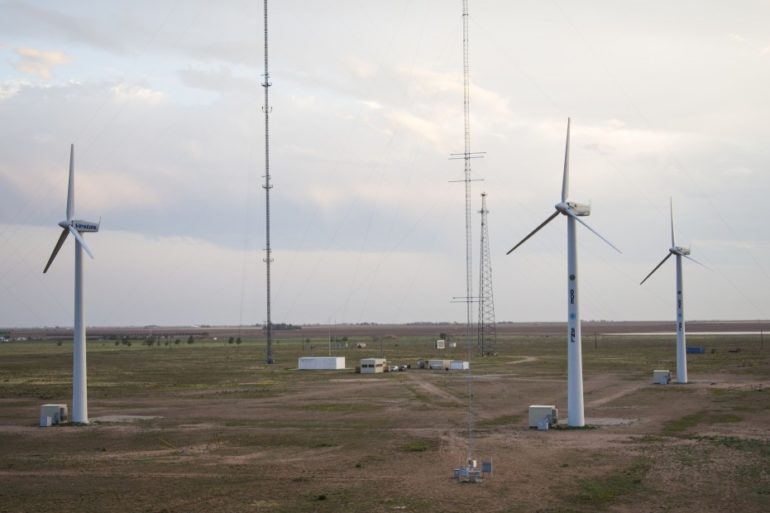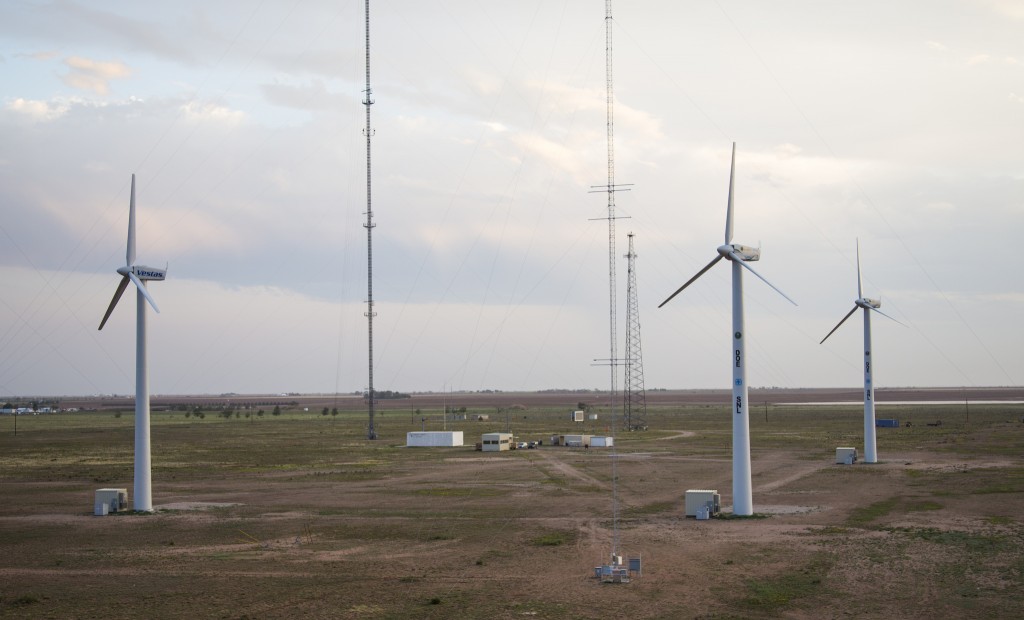

What can you do with a place that is flat as pancake, endures heat, cold, and dust storms, and sports an average wind speed of 8.2 m/sec? Make it an independent test facility for wind turbines, solar panels, and utility scale batteries, of course. “And then work to get all three power sources to provide clean usable power that communities expect,” says Mark Harral, CEO of the Group NIRE test facility. Consulting firm and accredited third party test agency DNV GL also contributes to the work, he adds. This section of Lubbock, home to the test facility, is the recycled Reece Air Force Base, now the Reece Tech Center.
The Group NIRE (National Institute for Renewable Energy) facility launched in 2010 after wind programs completed at nearby Texas Tech University but needed further development that was beyond the University’s charter. “National labs and universities are good at basic and applied research but when it comes to full scale prototype testing, they fall short,” says Harral. “So Group NIRE was formed to create a national testing and certification facility, a for-profit company with a nonprofit approach, to serve and benefit the utility industry,” he adds.
The organization has leased enough land to deploy some eight wind turbines for testing to IEC standards. Over the last few years, it has deployed an Alstom Power 1.67 MW Equos turbine and a Gamesa G114, 2-MW turbine, a next generation design. “More recently, we have two more prototype wind turbines under test. They are being certified to IEC standards. Both prototypes are the developer’s next generator turbines. One is 2.5 MW, 107-m rotor, and the other, a 2 MW, 114m rotor diameter,” says Harral.
Turbine OEMs used to work out a special arrangement to test their wind turbines on a commercial wind farm. But that raises complicating issues. An independent facility allows working through the issues that also allows plugging a turbine into distribution voltage and testing it to the IEC standard. Group NIRE does the lab work, deals with local people and land owners, and negotiates the PPAs while DNV GL examines the data sets and decides whether or not to give its stamp of approval..
The power generated by the test turbines goes to the local community, not the grid. “That makes it easier to work with the utilities,” he says.
The organization has spent about $1.5 million to build out the electrical system so that for tests, engineers can shift power in multiple directions to multiple distribution systems. “We also got into energy storage with a 1 MW, 1-MWh battery which works in concert with the wind turbines. We are also working with ARPA-E testing the next generation energy storage systems, thanks to a grant we received from DNV GL with whom we work closely.”
One facility goal is to sample each generator at the point of interconnect at about 20 to 30 times/sec for high fidelity data and see what happens when all the generators in load at one location.

Another facility goal is to develop new technology independent of the PTC. “On the wind side, turbines are developing to the point where they will be more cost effective without the PTC in two to three years. On the solar side, we are just getting started, but we know how to tie into the grid. We are also seeking comment from people in the solar industry about what facility functions would be useful to them,” he says.
The facility’s most recent project, a $13 million deal from the Texas Emerging Technical fund, establishes a lab for energy asset management. This will include a solar testing facility. About a 150 kW will be in the first phase which will build out to 2 to 3 MW.
“We want to do the same that we did on the wind and battery side and translate it into the solar industry, so there is now a place to test inverters. We can call on DNV GL for certification of the technology and field test it here,” he adds.
Harral says the facility will have its first solar panels up and running by the end of the year, and will tie them into the same distribution system as wind turbines and utility-scale batteries. “That will let us see in real time how all these different generators work together as well as the substation loads to the consumers,” he adds.
Group NIRE also has advantages over other turbine test facilities such as NREL’s in Boulder, Colorado. A key differentiator is the wind and wind speeds. “We have the 8.2 m/sec average wind speed and a DNV GL report details our wind condition throughout the entire year. That means we can produce power year round. NREL on the other hand, will have downtime, and then some windy periods and others not so much. Also, we do not have high turbulence of the mountain site.”
To highlight the facility and its capabilities, Harral is planning a conference later this year. “It will focus on energy asset management across multiple and different generators. Wind energy will have half a day, energy will have half a day, and solar may get half of the following day. Topics will deal with how to combine wind-turbine data with battery data, solar data, PMU data then communicate and analyze it,” he says.
A last part of the conference will deal with cyber security. “We have done some work for Intel testing one of their cyber security products for the energy market. For tests, we created a honey pot – a treasure trove of what appears to be valuable utility information – that let us watch hackers in foreign counties try to break in. If you want to see scary stuff, this is it,” says Harral.
